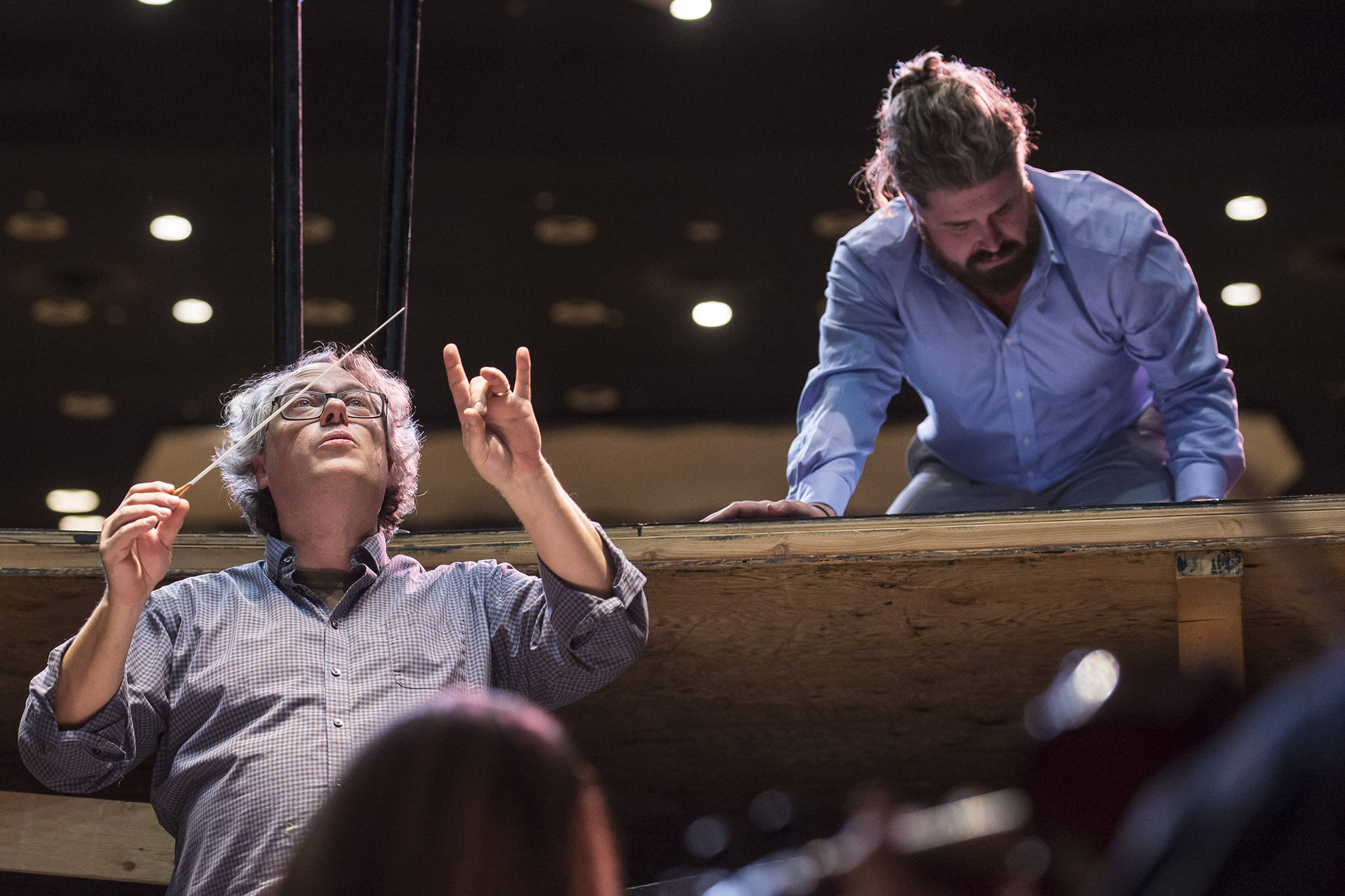About 10 minutes of brand new music has been created with Alaska’s patron saint in mind, and the piece is coming to a nearby venue.
St. Therese, who is the namesake of a shrine about 20 miles north of downtown Juneau, is the inspiration for new work composed by Emerson Eads to be played April 6 and 7 by Juneau Symphony Orchestra with William Todd Hunt conducting during the symphony’s April concerts.
“People love doing new music and discovering new sounds and potentially doing a piece that will be played elsewhere and live on,” Hunt said in an interview with the Capital City Weekly. “Being the first people to play it is quite an honor.”
Eads, who was commissioned to write the opera “Princess Sophia,” was tasked by Hunt to write a piece for a Juneau landmark.
Hunt said the two discussed a handful of Juneau landmarks that could serve as the inspiration for a commissioned piece, and The National Shrine of Saint Therese immediately resonated with Eads.
“I didn’t think twice about it,” Eads said during an interview with the Capital City Weekly. “I decided to write a piece that evoked her spirit. The piece is called, ‘I Love Him.’”
[Low census response is costing Alaska millions of dollars]
The title for the composition comes from Therese’s last words, “My God, I love you,” and is also a tribute to Eads’ father.
Eads said the goal of the piece was to channel the feeling created by the landscape near the shrine as well as to express the pure, almost reckless love that Therese felt for the God she worshipped.
He said the dizzying joy she found in faith became evident to him while reading her autobiography “The Story of a Soul.”
“That’s what I got from it is this euphoric understanding of her place in relation to her God,” Eads said. “I’m jealous of that. I want that.”
Eads will give a talk further explaining the composition at 9:30 a.m. Saturday, April 6 at the Juneau-Douglas High School: Yadaa.at Kalé library.
Hunt said small moments of melody in “I Love Him” contrast with larger, broader accompaniment that mirrors the way expanses of ocean and mountains are near the shrine’s small chapel.
“That’s one of those things it’s hard to put into words, and I think a lot of people, given the background, will be able to listen to this and hear things and hear what Emerson was thinking about pretty clearly,” Hunt said. “It’s one of those places that’s special in that it’s created as a sacred space. It’s one of those spots that I think people of any faith or any spirituality can really find a connection.”
Dominique Johnson, communications director for the Diocese of Juneau, said the diocese is happy the saint’s story is being told and the space is being celebrated.
“I Love Him” is intended to the first entry in a series of Juneau landmark-inspired compositions envisioned by Hunt.
He said the exact future of the project is murky, but something is in the works.
“I’m not totally sure when the next one will come out,” Hunt said. “I’m not sure when, and I’m not sure for what, but I’m working on something with a Juneau landmark in mind.”
[Filmmaker talks digging into proposed mining project]
The spring concerts will feature a ton of other music, too.
Half of it will be choral and feature the Juneau Symphony Chorus with works based on Psalms.
There will also be some bass-driven bombast in the form of “The Sinfonietta” by Leoš Janáček.
Hunt said the performance will feature at least 10 trumpets and 24 total brass instruments.
“It’s got the largest brass section the symphony has ever had.”
About St. Therese
Marie Françoise-Thérèse Martin, also known as Therese of Lisieux, and later St. Therese lived a short life.
But she spent over a third of it as a cloistered nun of the Carmelite Order, according to the National Shrine of St. Therese website.
She was born in France in 1873, became a nun at age 15, and nine years later she died at the age of 24 after suffering from tuberculosis.
St. Therese was canonized in 1925 by Pope Pius XI, according to the Encyclopaedia Britanica. In 2015, her parents were canonized by Pope Francis.
St. Therese was known for the “little way,” which was a belief that grand or heroic actions were unnecessary to express a great love for God.
In addition to being the patron saint of Alaska and the Diocese of Juneau, her patronage includes florists, missionaries, pilots and priests, according to Franciscan Media.
“She’s sometimes known as the Little Flower,” Johnson said.
Know & Go
What: “Psalms & Fanfares,” Juneau Symphony’s spring concert.
When: 8 p.m., Saturday, April 6 and 3 p.m., Sunday, April 7. There a concert conversation an hour before the performances.
Where: Juneau-Douglas High School: Yadaa.at Kalé Auditorium, 1639 Glacier Ave.
Admission: Tickets cost $15-$35 and can be purchased online through JuneauSymphony.org.
• Contact arts and culture reporter Ben Hohenstatt at (907)523-2243 or bhohenstatt@juneauempire.com. Follow him on Twitter at @BenHohenstatt.

